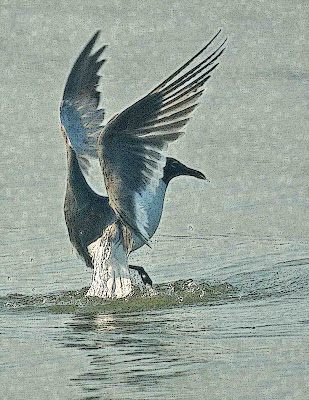Saturday, September 8, 2012
Real Cost of Bottled Water
Bottled Water: wholesale price/gallon in 2011: $1.21 (http://www.bottledwater.org/economics/real-cost-of-bottled-water )
Poland Springs home delivery: $1.93/gallon (http://www.polandspring.com/#/home ).
Crystal Springs home delivery: $1.20/gallon (http://www.water.com/shopping/budget-plan-select-quantity.jsf ).
"I decided to do a little math to see exactly how much the cost of bottled water purchased on the street compares to what comes out of the tap in New York City. By my calculations, filling a 16.9-ounce bottle with genuine NYC tap water costs about 1.3 tenths of a cent, compared to $1 to buy bottled water (95 cents if you return the bottle for the deposit, which, based on the number of bottles I see in the city's trash bins, not many people do.) If you were to refill a 16.9-ounce bottle with city tap water every day for a year, you'd pay 48 cents. Let me repeat that: That's 48 cents for the entire year! (Okay, it might be a little higher if you run the water until it gets cold.) In comparison, buy a $1 bottle of water every day, and you'd pay $346, sans the deposit. That's more than 700 times the cost of tap...."
--Anthony Giorgianni, July 12, 2011, http://news.consumerreports.org/money/2011/07/a-dollar-for-a-bottle-of-water-what-would-martians-think.html
Photos by Anthony F. Chiffolo
Comparative Prices
U.S. Gasoline Prices (http://gasbuddy.com/GB_Price_List.aspx ):
--Low: $3.579/gallon--Mississippi and South Carolina
--High: $4.325/gallon--Hawai'i
U.S. Milk Prices (http://data.bls.gov/cgi-bin/surveymost ):
$3.428/gallon U.S. average in July 2012
Photos by Anthony F. Chiffolo
There Is No "Easy" Button
"The hard facts are these: If we sum up the easy, cost-effective, eco-efficiency measures we should all embrace, the best we get is a slowing of the growth of environmental damage ... Obsessing over recycling and installing a few special light bulbs won't cut it. We need to be looking at fundamental change in our energy, transportation and agricultural systems rather than technological tweaking on the margins, and this means changes and costs that our current and would-be leaders seem afraid to discuss. Which is a pity, since Americans are at their best when they're struggling together, and sometimes with one another, toward difficult goals ... Surely we must do the easy things: They slow the damage and themselves become enabling symbols of empathy for future generations. But we cannot permit our leaders to sell us short. To stop at 'easy' is to say that the best we can do is accept an uninspired politics of guilt around a parade of uncoordinated individual action."
--Michael Maniates, Professor of Political Science and Environmental Science, Allegheny College
Photos by Anthony F. Chiffolo
"It's Not Easy Being Green"
"For starters, let's remember what we're trying to do: We're trying to change the climate system--to avoid the unmanageable and manage the unavoidable! We are trying to affect how much the rain falls, how strong the winds blow, how fast the ice melts. In addition to all that, we're trying to preserve and restore the world's rapidly depleting ecosystems--our forests, rivers, savannahs, oceans, and the cornucopia of plant and animal species they contain. Finally, we are trying to break a collective addiction to gasoline that is having not only profound climate effects, but also geopolitical ones. It doesn't get any bigger than this. This is not something you do as a hobby, and the adjective 'easy' should never--ever, ever--acompany this task.
"The truth is: Not only are there not 205 easy ways to really go green, there isn't one easy way to really go green! If we can pull this off, it will be the biggest single peacetime project humankind will have ever undertaken. Rare is the political leader anywhere in the world who will talk straight about the true size of this challenge."
--Thomas L. Friedman, Hot, Flat, and Crowded: Why We Need a Green Revolution--and How It Can Renew America
Photos by Anthony F. Chiffolo
Biodiversity
"Indonesia is the second-richest country in the world in terms of terrestrial biodiversity, after Brazil, and first in terms of marine biodiversity. Though covering only 1.3 percent of the earth's land surface, Indonesia's forests represent 10 percent of all the world's tropical forest cover and are home to 20 percent of all the world's species of flora and fauna, 17 percent of the world's bird species, and more than 25 percent of the world's fish species. Just ten hectares in the Indonesian island of Borneo contains more different tree species than are found in all of North America--not to mention a raft of plants, insects, and animals that don't exist anywhere else on earth. In fact, little Borneo, with less than 1 percent of the earth's land surface, reportedly holds 6 percent of the world's total bird species, mammal species, and flowering plant species. The whole Caribbean has only about one-tenth the marine biodiversity of Indonesia, which sits at the confluence of the Indian Ocean, the South China Sea, and the Pacific Ocean, and is nourished by all three."
--Thomas L. Friedman, Hot, Flat, and Crowded: Why We Need a Green Revolution--and How It Can Renew America
Photos by Anthony F. Chiffolo
Subscribe to:
Comments (Atom)
b.JPG)




















